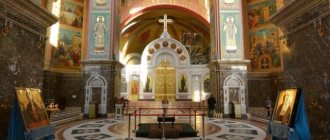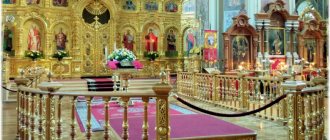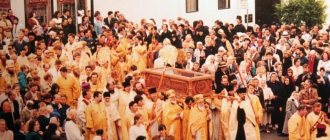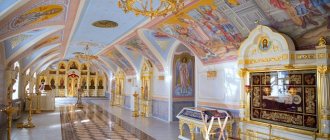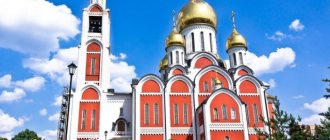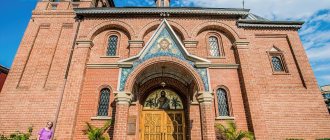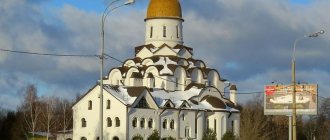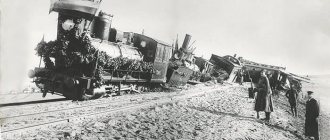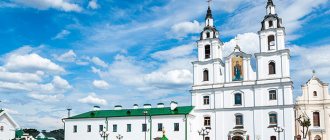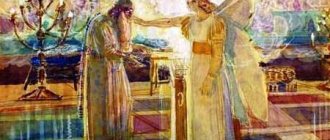Mir
Russia Republic of Crimea Church of St. John the Baptist (Kerch) Map is loading...
{"format":"leaflet","minzoom":false,"maxzoom":false,"limit":50,"offset":0,"link":"all","sort":[""], "order":[],"headers":"show","mainlabel":"","intro":"","outro":"","searchlabel":"\u2026 \u0441\u043b\u0435\ u0434\u0443\u044e\u0449\u0438\u0435 \u0440\u0435\u0437\u0443\u043b\u044c\u0442\u0430\u0442\u044b","default":"","import-annotation":false,"width ":"auto","height":"350px","centre":{"text":"","title":"""link":"""lat":45.35134699794937063188626780174672603607177734375,"lon": 36.47622096059354390717999194748699665069580078125,"icon":""},"title":"","label":"","icon":"","lines":[],"polygons":[],"circles":[ ],"rectangles":[],"copycoords":false,"static":false,"zoom":8,"defzoom":14,"layers":["OpenStreetMap"],"image layers":[] ,"overlays":[],"resizable":false,"fullscreen":true,"scrollwheelzoom":true,"cluster":false,"clustermaxzoom":9,"clusterzoomonclick":true,"clustermaxradius":80, "clusterspiderfy":true,"geojson":"","clicktarget":"","showtitle":true,"hidenamespace":false,"template":"","userparam":"","activeicon": "","pagelabel":false,"ajaxcoordproperty":"","ajaxquery":"","locations":[{"text":"\u003Cb\u003E\u003Ca href=\"/palomnik/%D0% A5%D1%80%D0%B0%D0%BC_%D1%81%D0%B2%D1%8F%D1%82%D0%BE%D0%B3%D0%BE_%D0%98%D0%BE% D0%B0%D0%BD%D0%BD%D0%B0_%D0%9F%D1%80%D0%B5%D0%B4%D1%82%D0%B5%D1%87%D0%B8_(%D0 %9A%D0%B5%D1%80%D1%87%D1%8C)\» title=\»\u0425\u0440\u0430\u043c \u0441\u0432\u044f\u0442\u043e\u0433\u043e \u0418\ u043e\u0430\u043d\u043d\u0430 \u041f\u0440\u0435\u0434\u0442\u0435\u0447\u0438 (\u041a\u0435\u0440\u0447\u044c)\»\u003E\u0425 \u0440\u0430\u043c\ u0441\u0432\u044f\u0442\u043e\u0433\u043e \u0418\u043e\u0430\u043d\u043d\u0430 \u041f\u0440\u0435\u0434\u0442\u0435\u0447\u0 438 (\u041a\u0435\u0440\u0447 \u044c)\u003C/a\u003E\u003C/b\u003E\u003Chr /\u003E\u003Ca href=\»/palomnik/%D0%A1%D0%B2%D0%BE%D0%B9%D1%81% D1%82%D0%B2%D0%BE:%D0%90%D0%BD%D0%BD%D0%BE%D1%82%D0%B0%D1%86%D0%B8%D1%8F\" title=\»\u0421\u0432\u043e\u0439\u0441\u0442\u0432\u043e:\u0410\u043d\u043d\u043e\u0442\u0430\u0446\u0438\u044f\»\u003E\u0410\u0 43d\u043d\ u043e\u0442\u0430\u0446\u0438\u044f\u003C/a\u003E: \u043f\u0440\u0430\u0432\u043e\u0441\u043b\u0430\u0432\u043d\u044b\u0439 \u0445\u0440\u0430\u043c \u0432 \u0446\u0435\u043d\u0442\u0440\u0435 \u041a\u0435\u0440\u0447\u0438, \u0441\u0442\u0430\u0440\u0435\u0439\u0448\u043 8\u0439\u043d\u0430\u0442\ u0435\u0440\u0440\u0438\u0442\u043e\u0440\u0438\u0438\u041a\u0440\u044b\u043c\u0430. \u041f\u0430\u043c\u044f\u0442\u043d\u0438\u043a \u0432\u0438\u0437\u0430\u043d\u0442\u0438\u0439\u0441\u043a\u043e\u0433\u 043e\u0437\u043e\u0434\u0447 \u0435\u0441\u0442\u0432\u0430.","title":"\u0425\u0440\u0430\u043c \u0441\u0432\u044f\u0442\u043e\u0433\u043e \u0418\u043e\u0430 \u043d\u043d \u0430 \u041f\u0440\u0435\u0434\u0442\u0435\u0447\u0438 (\u041a\u0435\u0440\u0447\u044c)","link":"""lat":45.3513469979490011496636 7254965007305145263671875,"lon":36.47622096059399865453087841160595417022705078125 ,"icon":""}],,"imageLayers":[]}
45.346351; 36.45305
Russia, Republic of Crimea, Kerch urban district
Republic of Crimea
Russia
Telephone:
+7 (978) 060-28-93
Church of St. John the Baptist
- an Orthodox church in the center of Kerch, the oldest in Crimea. Monument of Byzantine architecture.
History[edit]
The structure is classified as a cross-domed church, built in the traditions of the Eastern Christian architectural school. The most similar churches in construction existed in the Asian regions of the Byzantine Empire, in Constantinople and Cyprus.
The oldest part of the temple is made of rows of white stone and flat bricks. Striped white and pink masonry is typical of Byzantine architects - this is how builders strengthened buildings in case of seismic shaking.
The estimated time of construction of the temple is between the 8th and 9th centuries, but debate about this continues, and most experts are inclined to believe that the temple was built by the 9th or even 11th century.
The antiquity of the temple is confirmed by amphoras from the 8th century found in its masonry, used as voice boxes, as well as an inscription on one of the columns that supports the temple vault. The inscription reads: “Here lies the servant of God, the son of George. The mummy reposed in the month 3 (days) hours 10 (in summer) from Adam 6260” (which corresponds to the year 752 from the Nativity of Christ).
There is a legend that the construction of the church began with the blessing of St. Andrew the First-Called.
The next mention of the church can be found in the inscription of the Tmutarakan stone, located in the Hermitage. “In the summer of 6576 of Indictment 6, Prince Gleb measured the sea on the ice from Tmutorokan to Korchev 14,000 fathoms.” A number of researchers have suggested that it is not so much the width of the Kerch Strait that is carved on the stone, but the distance between the Church of John the Baptist in Kerch and the Church of Our Lady on the Taman Peninsula, which is no longer preserved.
During the Genoese domination of the Black and Azov Seas, the temple enjoyed great fame. Perhaps that is why the Kerch Strait was called the Strait of St. John, and the city itself was called the port of St. John, although its official name at that time was Cherchio or Vosporo. During the existence of the Crimean Khanate, the temple was converted into a mosque.
By the time Crimea was annexed by Russia, the church was in disrepair. Its foundation subsided greatly, so a staircase of eight steps was built to enter the temple. A three-nave porch in pseudo-Byzantine style was added to the temple in 1834 on the western side. In 1845, the complex was replenished with a two-tier bell tower and a northern porch, built according to the design of the architect Alexander Digby. In the same years, builders engaged in reconstruction discovered an image of two saints under the dome of the fresco. According to Igor Grabar, the frescoes could have been painted by students of Theophanes the Greek.
In the 30s XX century the temple was closed. The official reason was lack of arrival. Only at the end of the 1950s. the church was once again talked about as a monument of Byzantine architecture. In 1963, it was given the status of an architectural monument of republican significance. However, this did not prevent the opening of a fish market near the temple.
Between 1974 and 1978 the temple was restored. To support and not completely destroy the remains of the dome, the builders installed a metal supporting frame. To restore the masonry, stones and bricks identical to the original were used. Artists restored part of the temple's paintings and ancient plaster. Around the southern and eastern facades of the ancient temple, the ground surface was lowered to its original level. They installed an Orthodox cross, although the restorers were not given permission to do so. After the restoration was completed, the lapidary collection of the Kerch Historical Museum was opened in the church.
Services in the temple began again in the 1990s, after the church was transferred to the Kerch Orthodox community.
Architectural features of the Church of St. John the Baptist in Kerch
The Kerch Cathedral of St. John the Baptist is a complex architectural complex that was fully formed only at the end of the 19th century.
This is an elegant four-pillar cross-domed majestic structure with a three-nave basilica, a vestibule and a bell tower.
- The masterpiece of Byzantine architecture is crowned with a hemispherical dome mounted on a high drum.
- Narrow window openings are cut in the dome part, through which sunlight penetrates into the interior of the church throughout the day.
- The type of masonry of the external walls of the northern facade is noteworthy - they are made of white stone blocks, which alternate with rows of red flat bricks - plinths.
This layering of materials adds an elegant and formal appearance and improves the stability and strength of the structure. The arches, the finials of narrow windows and the base of the dome drum are laid using plinths. Three faceted apses adorn the eastern façade of the building.
Description[edit]
There is a version that the temple was built on the site of an even more ancient religious building. Thus, some scientists believe that the capitals of the church belong to the early type of Byzantine and Corinthian capitals, and their age dates back to the late 5th - early 6th centuries, so there is an assumption that the columns and capitals of the temple were made long before the construction of the church and were taken from the ancient basilica, perhaps located on the same site. Proof of this is the traces of burning found in the area of the temple, dating back to the 9th century, when the Khazars were expelled from the Bosporus - researchers put forward the point of view that the basilica simply burned down, and in its place the Temple of John the Baptist was built.
Today the church consists of an ancient part and a 19th-century building. In the church courtyard there is a stone slab with a recess that resembles a human footprint. According to local legends, this footprint belongs to John the Baptist or Andrew the First-Called.
What can be seen in the interior of the cathedral
The religious building does not attract with colorful frescoes and luxurious interiors. The Church of St. John the Baptist has a peaceful atmosphere. Here you can feel the special energy of the ancient place of worship and feel the breath of early Christian times.
The vaulted ceiling is supported by four dark gray marble columns with Corinthian style capitals. Between them hangs a massive bronze chandelier. Of interest is a section of pristine porous stone wall without plaster, which allows visitors to touch the thousand-year history.
In the interior decoration of the Christian shrine, you can see floor icon cases decorated with artistic carved elements, wooden frames, columns and semicircular headbands with a cross. The iconostasis is adjacent to one of the walls. The cathedral contains the relics of saints, a wooden bowl with a barely visible image of the Savior, as well as two silver bowls from the 16th-18th centuries.
Schedule of services[edit]
Tuesday
, 8.00 - hours, liturgy, confession, communion
17.00 - evening service
Wednesday
, 8.0 - hours, liturgy, confession, communion
17.00-evening service
Thursday
, 8.00 - hours, liturgy, confession, communion
17.00 - evening service
Friday
— 8.00 o’clock, liturgy, confession, communion
17.00 - evening service
Saturday
— 8.00 — hours, liturgy, confession, communion
10.00 - baptism
17.00 — all-night vigil
Resurrection
— 7.00 — hours, 7.30 — early liturgy
9.30 - hours, 10.00 - late liturgy
At the end of the liturgy, there is a prayer service on all days.
At the end of the prayer service there is a memorial service.
During the winter period, evening services begin at 16.00.
Interesting facts about the church
Numerous tourists and pilgrims come to the port city of Kerch to see with their own eyes a masterpiece of Byzantine architecture.
It is worth highlighting the following interesting information about the cathedral, which only strengthens the desire to visit the amazing temple:
- The age of the oldest structure is almost one and a half thousand years. Having crossed the threshold of the church, visitors involuntarily leave all earthly worries and plunge into reverent silence;
- restorers and architects managed to preserve the foundation, the northern wall with the original masonry and the cross-domed layout of the structure of the 11th century AD;
- Empty amphorae were mounted into the wall of the temple to enhance the acoustics and convey the words of sermons to every parishioner;
- most of the original fresco paintings were destroyed during the period of Ottoman rule in the Crimea;
- during one of the reconstructions of the cathedral, scientists discovered under a layer of plaster fragments of images of the figures of two saints - it is assumed that the authors of the frescoes were students of the legendary Byzantine artist Theophan the Greek;
- In past times, on solemn religious days, numerous pilgrims flocked to the temple to see a unique relic - a stone with a depression in the shape of a human foot. According to local legends, the footprint was attributed to Andrew the First-Called or the Forerunner of the Lord. Water was poured into the imprint and believers drank it to heal from ailments;
According to the description of the 19th century Crimean historian Kh. Zenkevich, unique Christian relics were kept in the cathedral. Among them:
- gilded oak iconostasis;
- manuscripts of the 11th-12th centuries;
- images of the Mother of God, the Savior, John the Baptist.
Ancient icons were placed in icon cases framed with precious stones. Unfortunately, religious artifacts have not survived to modern days.
During Soviet times
Soon after the revolution, the temple was closed. From that time on, it began to gradually deteriorate. During the Great Patriotic War, the temple lost the iconostasis, many ancient images and two most valuable liturgical books of the 11th and 12th centuries.
At this time, the country was at great risk of losing its oldest architectural monument forever. But, fortunately, historians finally noticed him in the 50s. By that time, the church was already significantly dilapidated, and next to it there was a fish market. Excavations were carried out under the leadership of archaeologist T. Makarova. It was then that traces of the existence of earlier religious buildings of the 6th century were discovered at this place.
In the 70s, enormous restoration work was carried out in the temple. After that, it housed a historical exhibition.
In 1990, the building was returned to the Church. Since then, services have been held in the temple again.
Church of John the Baptist in Kerch, iconostasis
Church of the Great Martyr Irina (Kerch)[edit]
At the end of the 19th century, a parish chapel was opened at the Kerch City Hospital.
Consecrated on May 5/18, 1891 in the name of the Holy Great Martyr Irina, the heavenly patroness of the Moscow merchant Irina Forofontova, at whose expense the chapel was built.
It was closed in the 30s of the last century - during times of fierce persecution brought against the Orthodox Church by the godless authorities. Used for various medical institutions. Later - a store.
In 1997, by decision of the Council of Ministers of the Autonomous Republic of Crimea, the chapel of the Holy Great Martyr Irina was returned to the Church.
On June 22, 2003, on the Sunday of All Saints, with the blessing of His Eminence Lazarus, Metropolitan of Simferopol and Crimea, the first Divine Liturgy was celebrated in the chapel, which marks the beginning of a new life for the ancient chapel - but as a full-fledged temple.
Address
: Russia, Republic of Crimea, Kerch, st. Shlagbaumskaya, 32.
How to get there (get there)?
Getting to the Church of St. John the Baptist is easy by public transport. Minibuses No. 5 and No. 6 go from the bus station in this direction; you need to get off at the stop “pl. Lenin". The same bus number 6 goes here from the railway station.
By car from the center of Kerch you can get to the church in this way:
Note to tourists
- Address: Dmitrova street, 2, Kerch, Crimea, Russia.
- Coordinates: 45.351449, 36.476101.
- Official site:
- Phone: +7-36561-2-22-93.
Not many Kerch attractions can compare with the Church of John the Baptist. But over the course of its centuries-old history, the city has changed only a dozen names and acquired even more - both culturally and architecturally. But the ancient Byzantine temple will always be its important decoration, if only because there is nothing like it anywhere else! Finally, watch a short video about it.
Liked? Share with your friends!
In Tsarist Russia
In the 19th century, extensive construction work was carried out in the temple. Gradually, the church was supplemented with a western limit, a three-nave vestibule, a northern vestibule and bell towers. Until its closure in the post-revolutionary years, this temple served as a center of spiritual life for the local Greek population. Many pilgrims flocked here.
Interesting! Among the most revered temple shrines at that time was one unusual stone with a depression reminiscent of a human footprint. People believed that this trace was left by a saint, according to one version, the Apostle Andrew the First-Called, according to another, the prophet of the Lord John.
This stone has gained extraordinary veneration among the people. Among numerous pilgrims there was a tradition of pouring holy water into the “footprint” and drinking it. This stone has survived to this day. Now it can be found in the temple courtyard.
Before the revolution, the church had two primary schools for children from Greek-speaking and Russian-speaking families. One of the most famous saints of the 20th century, Archbishop Luke Voino-Yasenetsky, was baptized in this church. He was still a baby then.
Read about the Crimean saint:
- Icon of Luke Voino-Yasenetsky
- Prayer to Luka Krymsky before surgery
- Akathist to Saint Luke
Diocesan Church of St. Luke (Kerch)[edit]
The creation of the temple was caused by the realities of life. At the turn of the 20th-21st centuries, new residential areas appeared in the city - multi-storey buildings on Marata, Blucher, Budyonny, Voroshilov streets, along Industrial Highway. There was a need to create a spiritual center that would unite all believers living in this huge residential area.
At the origins of the creation of the temple was Archpriest Sergius Koval, rector of the Church of the Holy Blessed Alexander Nevsky. He created an initiative group of parishioners living in the Marat microdistrict.
In the Marat region, the disbandment of the military unit located there began. An idea arose in one of the vacated buildings, in the former Officers' House, to create a parish church.
By this time, the building was already dilapidated; in fact, only the walls stood.
And then the year 2000 came. On September 19, Metropolitan Lazar of Simferopol and Crimea consecrated the altar in the church.
The name of the temple was given in honor of St. Luke, Archbishop of Simferopol and Crimea, a native of Kerch, Valentin Feliksovich Voino-Yasenesky.
Address:
Russia, 298320, R Crimea, Kerch, st. Donskoy, 5.
Directions:
Kerch, from the bus station, bus. 5 to the stop. "Marat" or "st. Voroshilov"
Telephone:
+7 978-721-27-22, +7 978-978-80-41
Church of the Nativity of the Blessed Virgin Mary (Kerch)[edit]
The Church of the Nativity of the Blessed Virgin Mary dates back to 2000, when the church was given a civil building on the street. Lev Tolstoy, 161, which in different years housed children's institutions: the House of Pioneers, a kindergarten. According to the stories of old-timers, where the temple is now located, in 1938 a representative of the Greek Church consecrated the place for the temple.
Since September 2000, regular morning prayers and vespers began.
On October 24, 2000, the religious community “Nativity of the Blessed Virgin Mary” was registered. The temple has two chapels: a church on the second floor in honor of the Nativity of the Blessed Virgin Mary, a church on the first floor in honor of St. Blessed Xenia of Petersburg.
In March 2001, the first Divine Liturgy was served in the lower church. Regular services began.
In February 2003, extensive construction and re-equipment began. A bell tower, drum, main dome and onion were erected. That same year the cross was consecrated and installed. Then the bell tower dome was built.
In 2004, the first 5 small bells appeared, and on Easter 2005 the bell was raised.
On the patronal feast day of September 21, 2008, the Divine Liturgy was served for the first time in the upper church.
Address:
Russia, Republic of Crimea, Kerch, st. L. Tolstoy, 161
Church of the Assumption of the Blessed Virgin Mary (Kerch)[edit]
Before the appearance of their own church, Orthodox residents of the village of Stary Karantin (now the Arshintsevo district) had to travel along dirt roads to the center of Kerch to attend services - this is where the nearest Alexander Nevsky Church was located.
In the fall of 1903, State Councilor Alexander Vasilyevich Novikov donated a plot of his land to the city, and he donated part of it, in the center of the village, on a hill, for the construction of a temple.
Already on June 18, 1904, the project by the provincial architect A. Karapetov was approved, and on August 1, 1905, construction of the church began with funds from the residents of this village.
On February 5, 1907, a relatively small temple with a height of 18.1 m, designed for 350–450 people, was consecrated in honor of the Ascension of the Lord. It had three entrances, 15 windows, a three-tiered stone bell tower 19.2 m high. The central drum, bell tower and four domes were crowned with helmet-shaped domes. Inside there was a wooden iconostasis coated with brown varnish, and the church yard was surrounded by a stone fence.
Address:
Russia, Republic of Crimea, Kerch, st. New 50.
Temple of the Kazan Icon of the Mother of God (Kerch)[edit]
The community was organized on July 24, 2000. Previously, the building allocated for the temple belonged to the CrimeaCoopTorg Administration; was used as a store, which was later closed. At the request of the newly created Orthodox community, the building was leased to it. The building was repaired and rebuilt, and a bell tower was added.
Since November 17, 2008, Priest Mikhail has been the rector of the Church of the Kazan Mother of God. From 2000 to this day, services have been held in the church on holidays and Sundays.
Before closing in the village. Lighthouse of secondary school No. 21, the rector of the temple, Priest Mikhail, held conversations with students and teachers of the secondary educational institution. At the moment, the school is closed and the parishioners of the temple are mainly people of retirement age.
Address:
Russia, Crimea, Kerch, Podmayachny village, lane. Podgorny, 3
Restoration of the temple
The revival of the church began in the 1960s, when it was declared an architectural monument of republican significance. Ten years after this event, large-scale restoration work began, which took four years. First, the walls of the extensions and the bell tower were restored, and only then they began to put the ancient temple building in order. Due to the strong subsidence of the foundation, it was necessary to clear the ground deep around its base.
Restorers tried to preserve the original construction and painting elements, making maximum use of ancient technologies and materials.
Church of the Myrrh-Bearing Women (Kerch)[edit]
The building (year of construction before 1917) for the temple was initially transferred, according to the decision of the city session of July 16, 1998, to the balance of the religious Orthodox community of the St. Alexander Nevsky Church, taking into account the petition of the dean of the Kerch district, Archpriest Sergius Koval, dated June 5, 1998. , as well as the appeal of the Orthodox residents of the city.
On March 20, 2003, by decision of the city session, the church building was transferred from the balance of the Orthodox community of St. Alexander Nevsky Church to the balance of the Myrrh-Bearing Women's community.
Since September 25, 2014, the rector of the temple is Priest Valentin Melnik.
Address:
Republic of Crimea, Kerch, st. Voikogo 12
Telephone:
+7 (978) 0569111
Email:
Chapel-belfry of the Apostle Andrew the First-Called (Kerch)[edit]
According to legends and early medieval sources, in the 1st century, Christ’s disciple, Apostle Andrew the First-Called, preached Christianity in Kerch during his travels through the country of the Scythians.
In memory of this, on September 13, 2003, a chapel-belfry was consecrated, consisting of two metal columns standing on a granite cylinder, topped with a dome with a cross. The cylinder has a dedication inscription.
Address:
Republic of Crimea, Kerch, st. Komarova, opposite no. 2, pl. Shlagbaumskaya
Church of the Apostle Andrew the First-Called (Kerch)[edit]
The Church of the Apostle Andrew the First-Called in Kerch was built in 2007-2011.
It is a five-domed temple with a bell tower. The small consecration took place on April 24, 2011, the great consecration in 2013.
Since 2001, a hospital church in the name of the Icon of the Mother of God “Vsetsaritsa” at the oncology dispensary has been assigned to the Church of the Apostle Andrew the First-Called.
Address:
Russia, Kerch, st. Andrew the First-Called, house. 2
Telephone:
(daily from 8 to 17)
Email:
First reconstruction
In the 10th-12th centuries.
Kerch was part of the Russian
Principality of Tmutarakan
, and it was at the beginning of this period that the first major reconstruction of the temple was carried out. During the reconstruction process, the church was partially dismantled and then reassembled using the same structural elements (marble columns with Corinthian capitals, baked brick - plinths, etc.) and based on the existing cross-domed plan.
By the way, some historians believe that the inscription on the famous Tmutarakan stone, stored in the Hermitage, contains information not just about the distance between Kerch and Taman, but between their main temples - the Predtechensky
and
the Church of the Mother of God
(not preserved), which were similar in appearance to each other and were located approximately at the indicated distance.
Historical inscription on the Tmutarakan stone
Genoese who settled in Kerch in the 14th-15th centuries
, treated the temple very respectfully.
They repaired it and during their time fresco paintings appeared in the temple, supposedly made by students of Theophanes the Greek
. The Genoese even extended the temple name to the Kerch Strait and the city port, unofficially calling them after St. John.
In the 15th-18th centuries
Kerch became part of the Crimean Khanate as part of the Ottoman Empire.
Muslims, as often happened in those days, did not destroy the Orthodox church, but converted it into a mosque
. The frescoes were plastered over.
Since the end of the 18th century
Kerch, once again part of Russia, was again forced to engage in repairs and reconstruction of the temple.
Tourist information
Every tourist can visit the church on any day of the week; it is open seven days a week. On average, one tour of the temple lasts a minimum of 40 minutes and a maximum of 1.5 hours. A priest is appointed as a tour guide. You can visit this historical place absolutely free.

